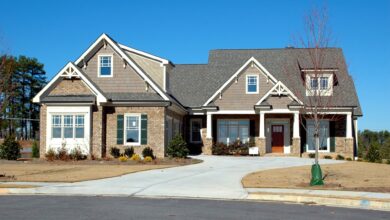Creating a Sustainable Home: Why Eco-Friendly Furniture Matters
In today’s world, in which environmental attention is more critical than ever, the concept of creating a sustainable home has received great traction. From strength-efficient appliances to eco-friendly building materials, owners are more and more seeking ways to reduce their ecological footprint.
nnnnOne regularly underestimated element of sustainable living is the choice of furniture. Eco-friendly fixtures, crafted with environmental obligation in mind, play a pivotal role in growing a home that isn’t always the handiest, aesthetically fascinating but additionally eco-aware.
nnnnIn this newsletter, we will discover the importance of green furniture in the quest for a sustainable home.
nnnnThe Rise of Sustainable Living
nnnnThe upward thrust of sustainable residing is a reaction to the environmentally demanding situations we are facing these days. Climate trade, deforestation, and the depletion of natural sources have raised the alarm for a more sustainable way of life.
nnnnSustainable residing contains a holistic approach to minimizing our ecological effect, and it starts off evolving domestically. Sustainable houses are designed to be energy-green, with capabilities like solar panels, progressed insulation, and rainwater harvesting structures.
nnnnThese homes additionally prioritize decreasing waste and recycling. However, what regularly gets overlooked is the fixtures that fill those areas. If you’re looking for eco-friendly furniture options to complement your sustainable home, consider visiting Modern Mill for a selection of sustainable and stylish pieces.
nnnnWhat Is Eco-Friendly Furniture?
nnnnEco-friendly furnishings, additionally referred to as sustainable or green furniture, is a class of home furniture designed with the surroundings in mind. What sets it apart from conventional furniture is the commitment to the usage of materials, production techniques, and layout concepts which have a reduced effect on the environment.
nnnnKey Characteristics of Eco-Friendly Furniture
nnnnSustainable Materials: Eco-pleasant furniture is made from sustainable materials like reclaimed wood, bamboo, or recycled metals. These materials are sourced responsibly to reduce harm to ecosystems.
nnnnLow-VOC (Volatile Organic Compounds) Finishes:
nnnnHarmful VOCs are chemicals frequently found in traditional furniture finishes. Eco-pleasant furniture uses low-VOC or VOC-loose finishes, reducing indoor air pollution.
nnnnMinimal Waste:
nnnnManufacturers of eco-friendly furniture aim to limit waste at some point in manufacturing and regularly use green recycling and repurposing techniques.
nnnnDurability:
nnnnSustainable fixtures are designed to be durable, ensuring an extended lifespan for every piece and reducing the need for replacements.
nnnnEco-Conscious Packaging:
nnnnEco-pleasant fixtures manufacturers regularly use recyclable or minimum packaging to reduce waste and environmental impact.
nnnnEnvironmental Impact
nnnnThe environmental effect of traditional fixture production is regularly underestimated. The fixtures industry is one of the major individuals of deforestation, carbon emissions, and waste. Here’s why green furniture matters from an environmental perspective:
nnnnReducing Deforestation
nnnnOne of the most considerable environmental advantages of green fixtures is their function in decreasing deforestation. Conventional furnishings are frequently crafted from wood sourced from unsustainable logging practices.
nnnnThe speedy depletion of forests harms ecosystems, and biodiversity, and contributes to climate change. Sustainable furnishings seek options, such as reclaimed wood or fast-developing bamboo, lowering the demand for virgin wood.
nnnnLowering Carbon Emissions
nnnnThe manufacturing and transportation of traditional furniture contain large electricity consumption and carbon emissions. Eco-friendly fixtures, then again, are regularly produced domestically, with the usage of strength-green techniques and materials with a decreased carbon footprint. This no longer only reduces emissions but also helps nearby economies.
nnnnMinimizing Waste
nnnnConventional fixture manufacturing generates a full-size amount of waste, consisting of offcuts, packaging, and discarded items that emerge in landfills. In comparison, eco-friendly furniture producers prioritize waste reduction and frequently use recycled or repurposed materials. They additionally minimize packaging waste via considerate design.
nnnnHealth Benefits
nnnnEco-friendly furnishings are not just about preserving the surroundings; they additionally contribute to a more fit indoor environment. This is particularly crucial for individuals who spend a tremendous portion of their time indoors.
nnnnImproved Indoor Air Quality
nnnnConventional fixtures frequently include materials and finishes that release unstable natural compounds (VOCs) into the air. These chemical substances can contribute to indoor air pollutants and have detrimental fitness results. Eco-friendly furniture makes use of low-VOC or VOC-unfastened finishes and substances, selling better indoor air fine.
nnnnLongevity and Durability
nnnnSustainable furniture isn’t just about being green; it’s also approximately longevity and durability. In a sustainable home, the aim is to decrease waste and consumption by investing in incredible, long-lasting items.
nnnnEco-Friendly Design Trends
nnnnSustainable dwelling would not mean sacrificing fashion and layout. Eco-friendly fixtures often align with modern design traits.
nnnnAesthetic Variety
nnnnEco-pleasant fixtures give a broad range of patterns, from rustic and reclaimed to modern and smooth. It can seamlessly blend with numerous layout aesthetics, making it a versatile desire for any home.
nnnnMinimalism and Simplicity
nnnnMany green furnishings portions are characterized by easy traces and minimalist designs. This minimalist approach aligns with current design traits that emphasize simplicity and capability.
nnnnUpcycling and Repurposing
nnnnUpcycling and repurposing are popular design tendencies in the sustainable furniture area of interest. These strategies include reworking discarded objects or materials into specific, one-of-a-kind fixture pieces.
nnnnMaking Informed Choices
nnnnChoosing eco-friendly fixtures would not be a daunting project. Here are some guidelines that will help you make informed alternatives:
nnnnLook for Certifications
nnnnCheck for certifications and labels together with FSC (Forest Stewardship Council) for wooden merchandise, GREENGUARD for low-VOC emissions, and different identified green certifications.
nnnnInvestigate Materials
nnnnAsk about the substances used within the furniture. Is the wood sustainably sourced? Are any reclaimed or recycled substances used?
nnnnnnnn
Consider Local Options
nnnnBuying local reduces transportation-associated emissions and helps your local economy. Seek out fixtures made by local artisans or producers.
nnnnEvaluate Longevity
nnnnConsider the durability and durability of the furnishings. High-first-class, properly-made pieces might cost extra upfront but can prevent cash in the long run.
nnnnPersonalize Your Choices
nnnnEco-friendly fixtures are available in a whole lot of patterns. Choose portions that fit your non-public flavor and complement your property decor.
nnnnOpt for Vintage and Secondhand
nnnnVintage and secondhand fixtures can be a green preference as they extend the lifestyles of current portions. Thrift stores, consignment stores, and online marketplaces are notable locations to locate pre-cherished fixtures.
nnnnConclusion
nnnnCreating a sustainable home is more than simply a cultured choice; it’s a dedication to minimizing your ecological footprint and promoting a more fit, greater moral manner of life. Eco-pleasant furnishings are an important element of this endeavor because they offer a mess of advantages – from reducing deforestation and decreasing carbon emissions to improving indoor air best and assisting moral production practices.
n


